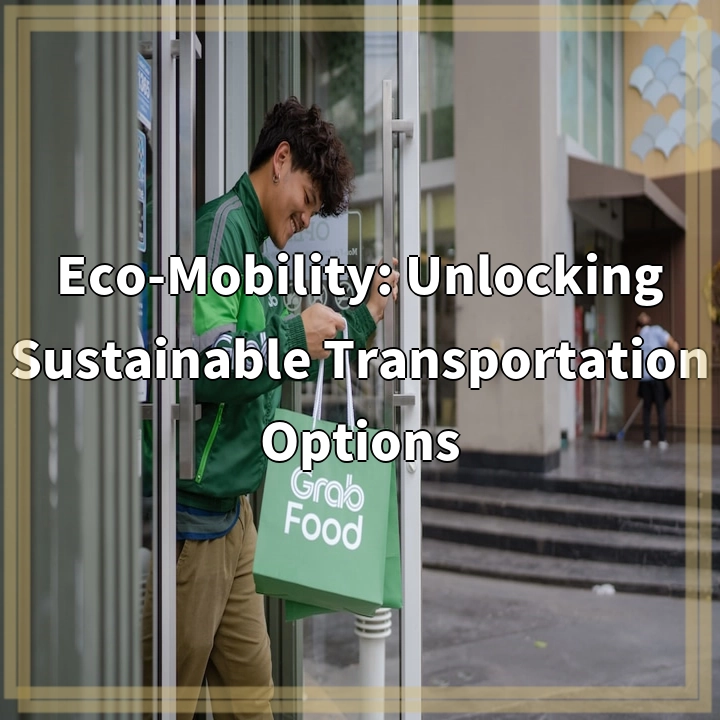
What is Eco-Mobility?
Eco-mobility refers to the concept of sustainable transportation options that minimize environmental impacts and improve the quality of urban living. It encompasses various modes of transportation that aim to reduce carbon emissions, congestion, and reliance on fossil fuels. Eco-mobility solutions prioritize walking, cycling, public transit, and the use of electric vehicles, among others, to create a more sustainable and efficient transportation system.
Real-world Problems Associated with Eco-Mobility
1. Lack of Infrastructure:
One of the major challenges of implementing eco-mobility solutions is the lack of proper infrastructure to support sustainable transportation. This includes the absence of dedicated cycling and pedestrian lanes, insufficient public transportation systems, and limited charging stations for electric vehicles. Without the necessary infrastructure in place, it becomes difficult for people to embrace eco-friendly transportation alternatives.
2. Resistance to Change:
Another hurdle in adopting eco-mobility options is the resistance to change from both individuals and traditional transportation industries. Many people are accustomed to using personal vehicles and may be reluctant to switch to more sustainable alternatives. Additionally, industries involved in conventional transportation, such as fossil fuel companies and car manufacturers, may resist the shift towards eco-friendly transportation due to financial motivations.
3. Affordability:
Affordability is a significant concern when it comes to eco-mobility options. Electric vehicles and certain forms of public transportation, although environmentally friendly, can be expensive for some individuals. High upfront costs of purchasing electric vehicles and limited availability of affordable public transportation options can act as barriers to adopting sustainable transportation alternatives, especially for low-income communities.
4. Limited Accessibility:
Accessibility plays a crucial role in the successful implementation of eco-mobility solutions. In some regions, there may be limited access to public transportation facilities or inadequate infrastructure for pedestrians and cyclists. This lack of accessibility makes it challenging for individuals to rely on sustainable transportation options and forces them to resort to less environmentally friendly modes of transportation.
5. Cultural and Behavioral Shifts:
Implementing eco-mobility solutions often requires a significant cultural and behavioral shift within communities. Encouraging people to change their commuting habits, embrace public transportation, or adopt cycling and walking can prove challenging. Overcoming ingrained habits and norms associated with personal vehicle use requires targeted educational campaigns, incentives, and long-term support from city planners and policymakers.
Addressing these real-world problems associated with eco-mobility is crucial for creating sustainable transportation systems that benefit the environment and enhance the well-being of individuals and communities. Through collaborative efforts, strategic planning, and investment in infrastructure, it is possible to unlock the full potential of eco-mobility and pave the way for a more sustainable future.

Solutions to Real-world Problems Associated with Eco-Mobility
1. Infrastructure Development:
Investing in the development of robust infrastructure that supports eco-mobility is essential. This includes building dedicated cycling and pedestrian lanes, expanding and improving public transportation networks, and increasing the availability of charging stations for electric vehicles. Creating an accessible and comprehensive infrastructure system encourages the adoption of sustainable transportation options.
2. Raising Awareness and Education:
Raising awareness about the benefits of eco-mobility and providing education on sustainable transportation options can help overcome resistance to change. Educational campaigns can highlight the environmental advantages, cost savings, and health benefits associated with eco-friendly transportation. By showcasing success stories and providing reliable information, individuals and communities can be motivated to embrace sustainable transportation alternatives.
3. Financial Incentives:
To address affordability concerns, governments and organizations can implement financial incentives to promote the adoption of eco-mobility options. This can include tax incentives, subsidies, and rebates for purchasing electric vehicles, reducing fares for public transportation, and implementing fare integration systems to improve accessibility for all income groups. Making sustainable transportation more affordable removes financial barriers and encourages wider adoption.
4. Collaborative Planning and Stakeholder Engagement:
Engaging stakeholders, including city planners, policymakers, transportation companies, and community members, in the planning and implementation of sustainable transportation solutions is crucial. Collaborative efforts help ensure that the needs and concerns of all groups are considered. By involving various stakeholders, decisions can be made based on collective input, leading to more effective and inclusive eco-mobility strategies.
5. Integration and Multimodal Solutions:
Developing integrated and multimodal transportation systems enhances accessibility and encourages the use of sustainable transportation. Integrating different modes of transportation, such as combining cycling with public transit, improves connectivity and convenience. Implementing digital platforms and apps that provide real-time information about various transportation options further facilitates multimodal travel and encourages eco-mobility.
By implementing these solutions, we can overcome the real-world problems associated with eco-mobility and create a more sustainable transportation system. These initiatives promote environmental conservation, better air quality, and improved quality of life for individuals and communities. It is through concerted efforts and collaboration that we can unlock the full potential of eco-mobility and create a greener future.















